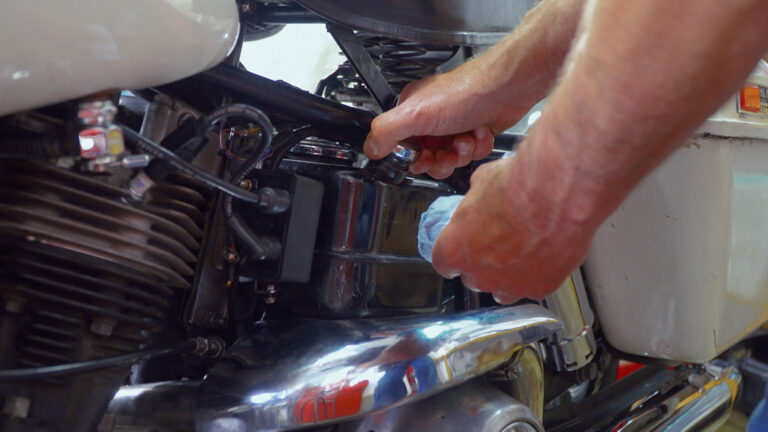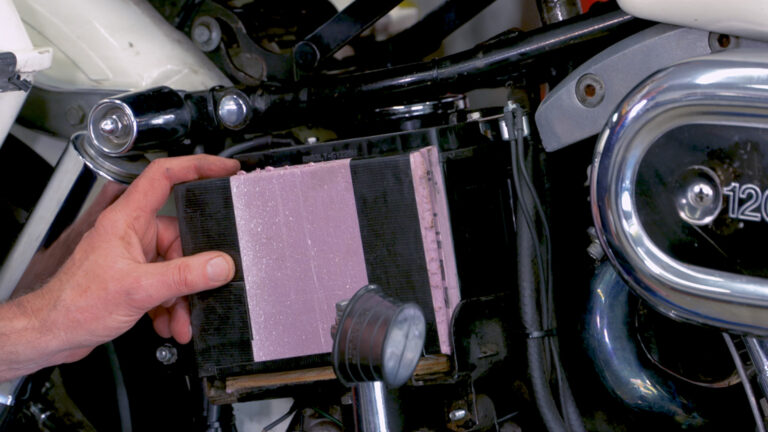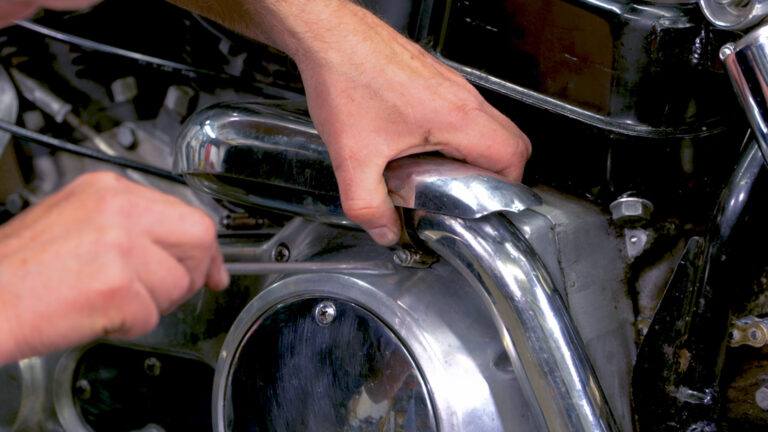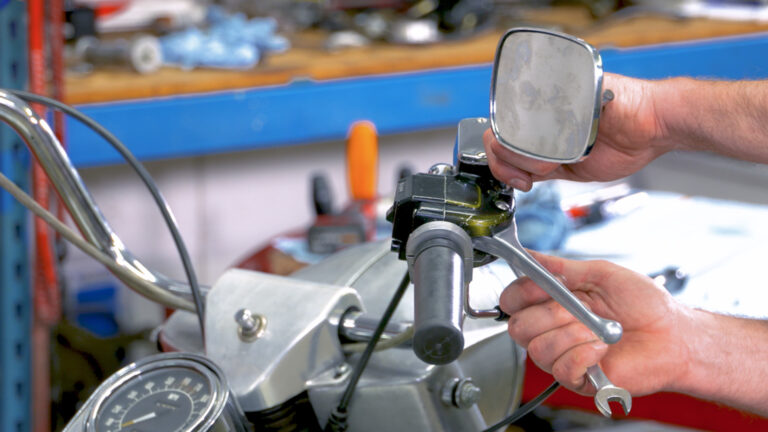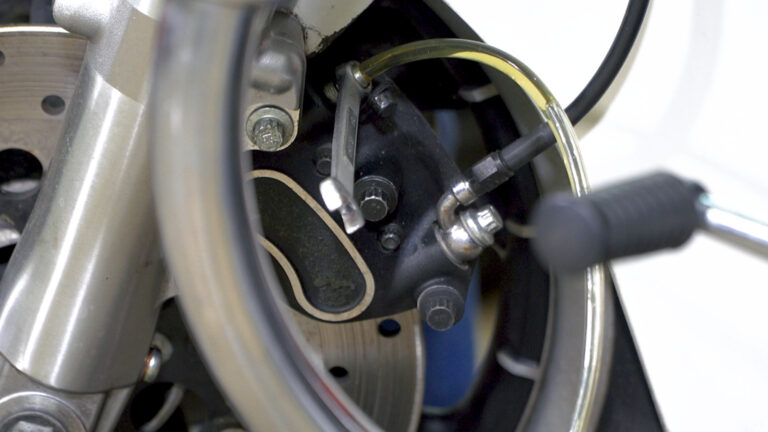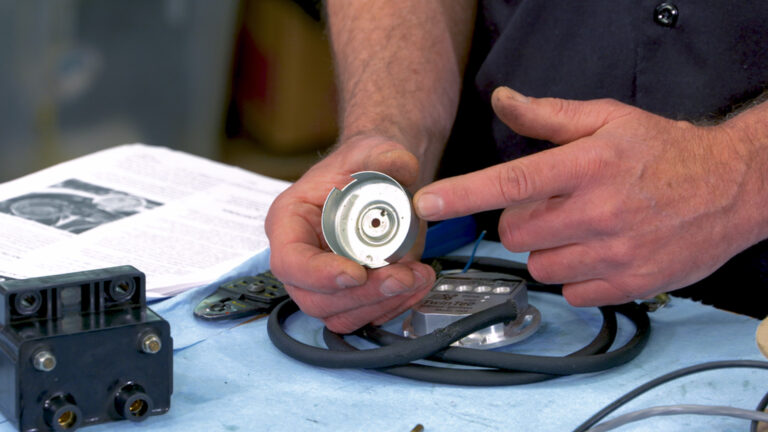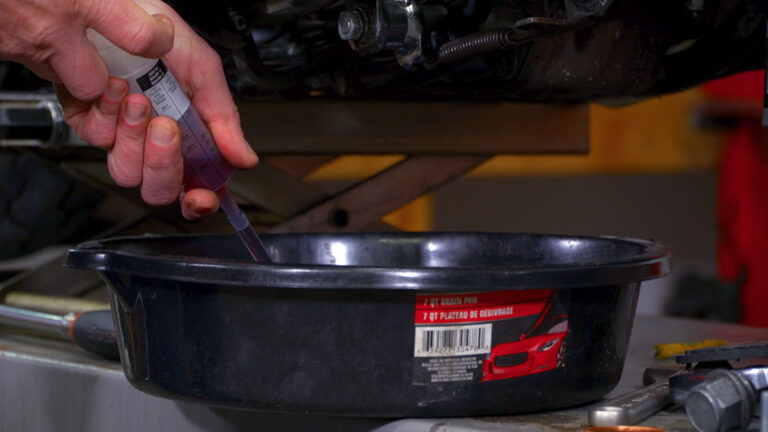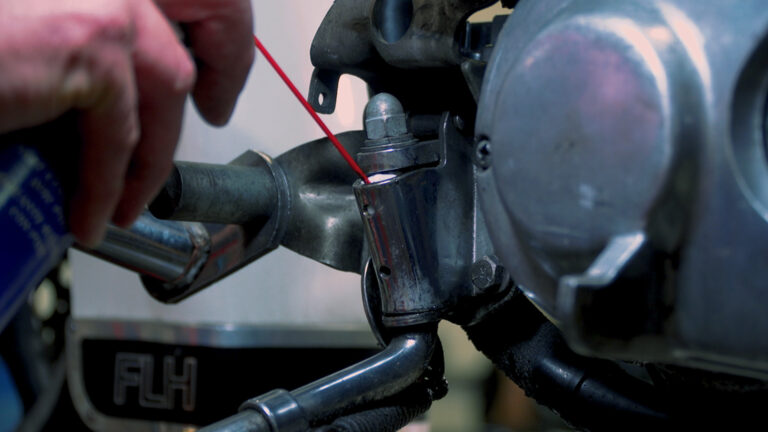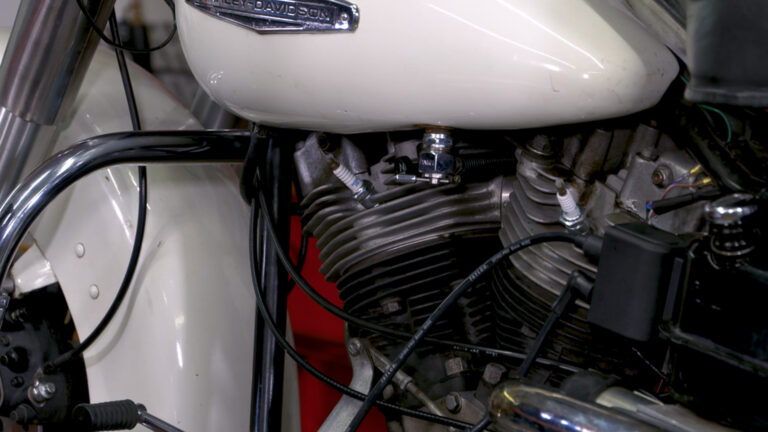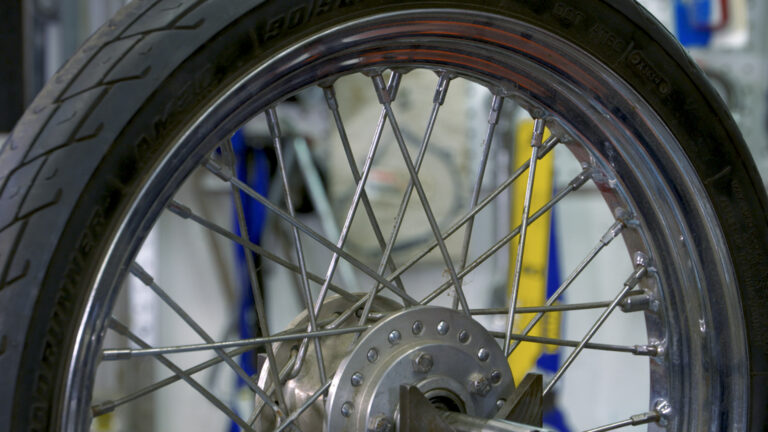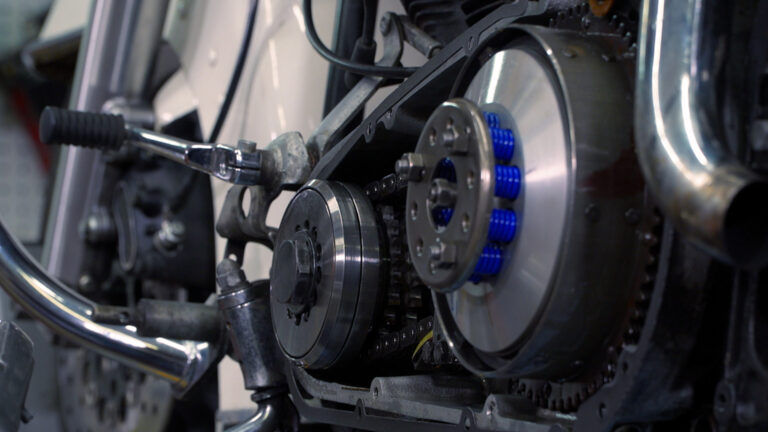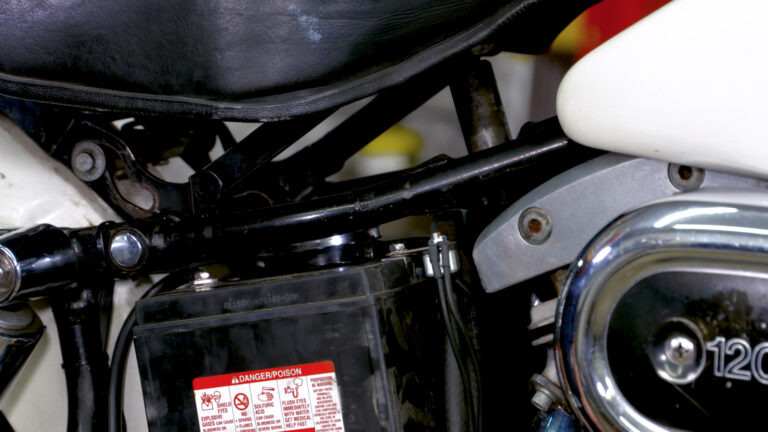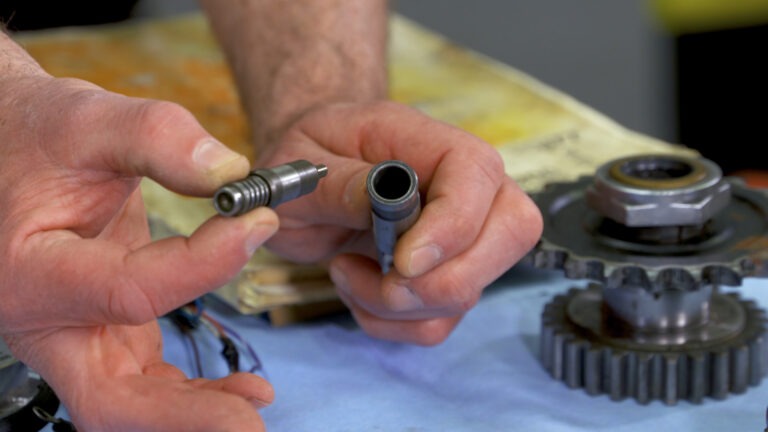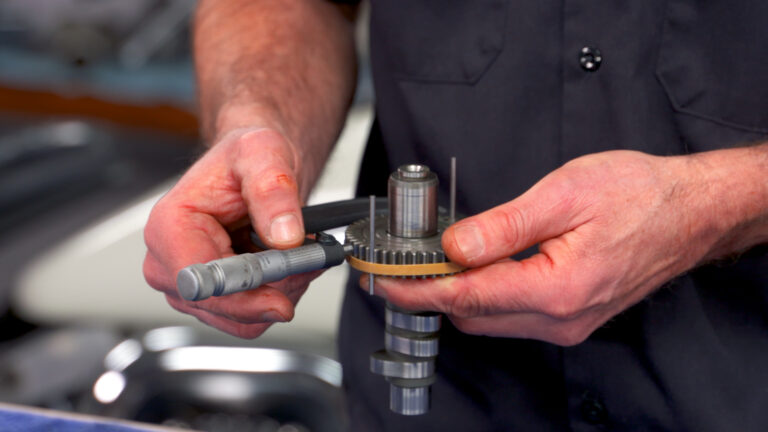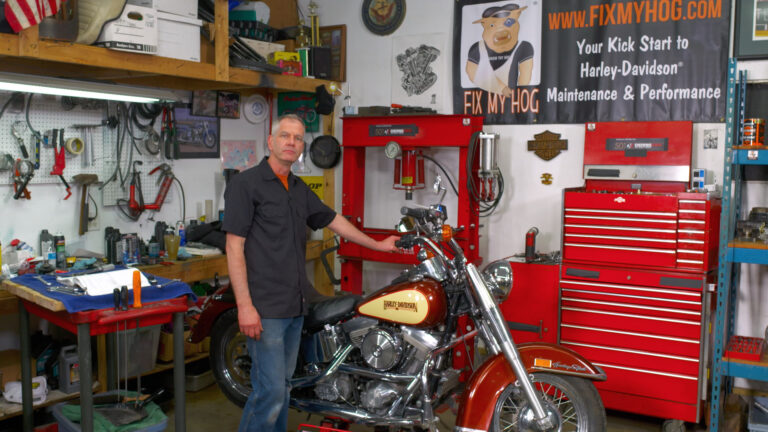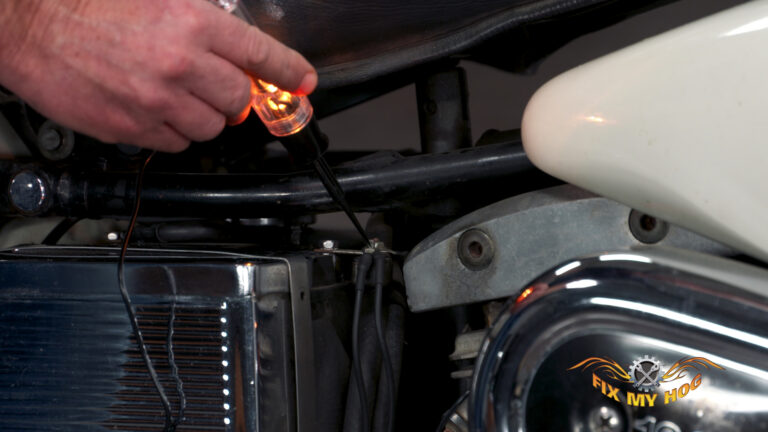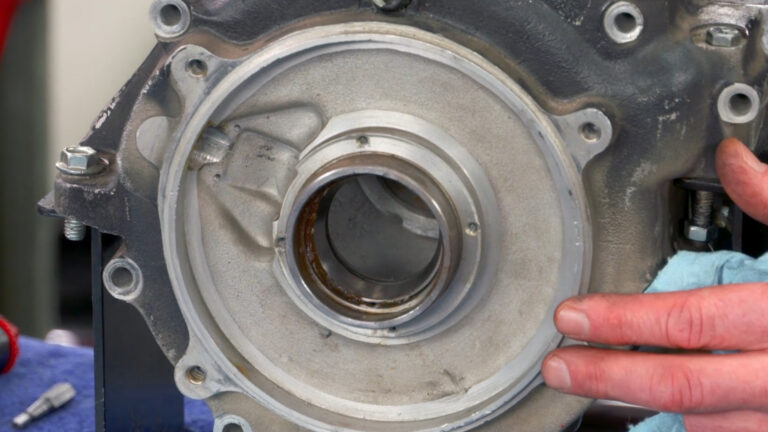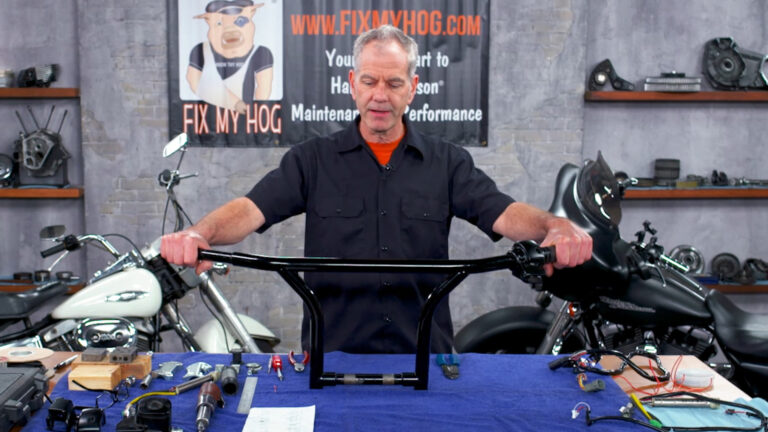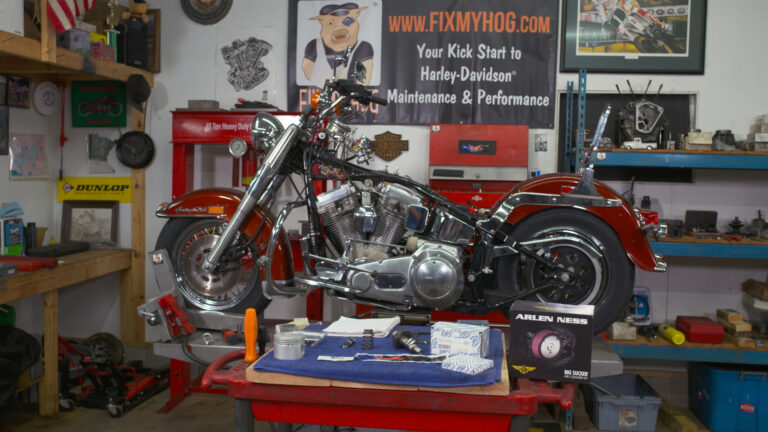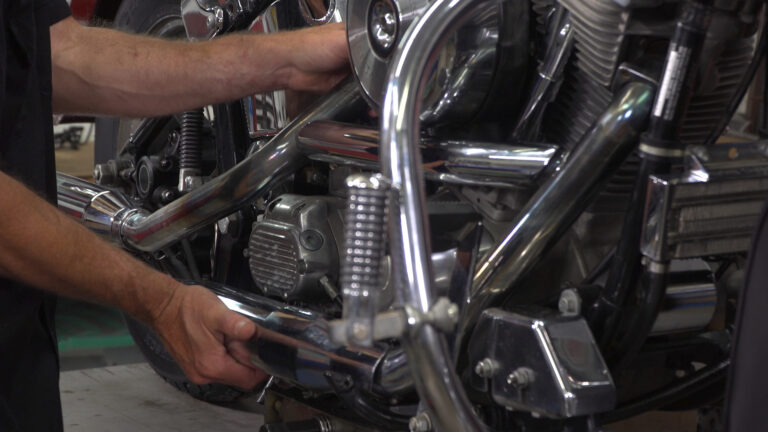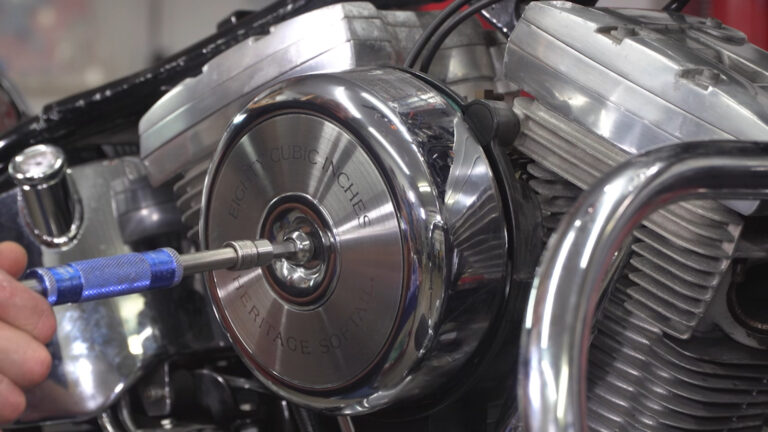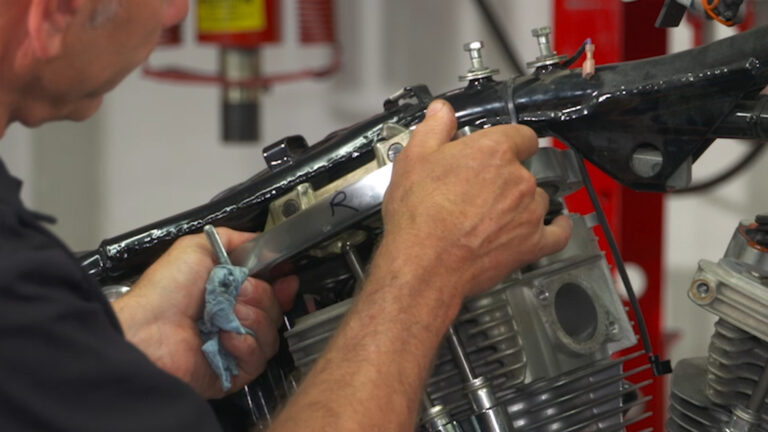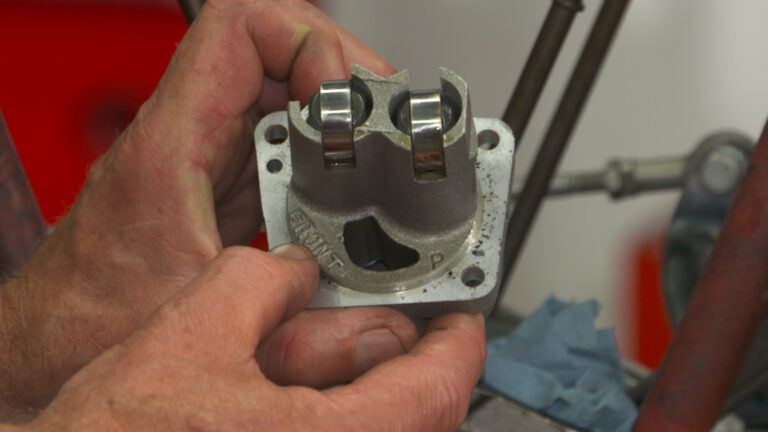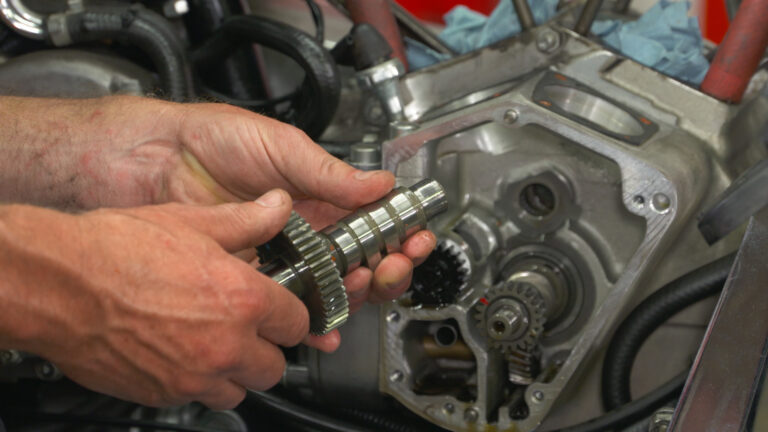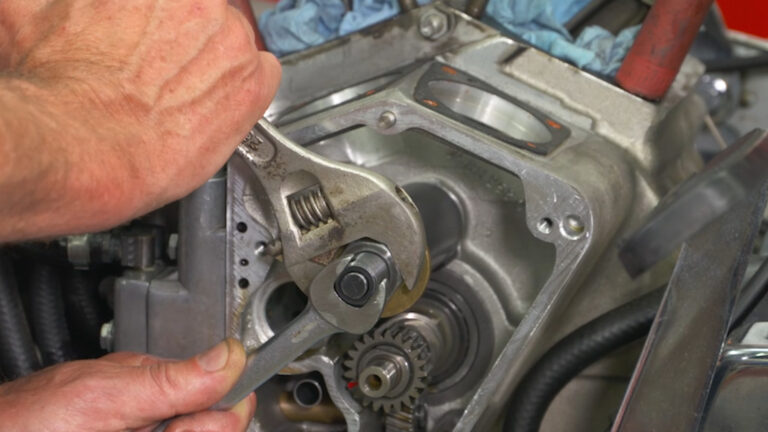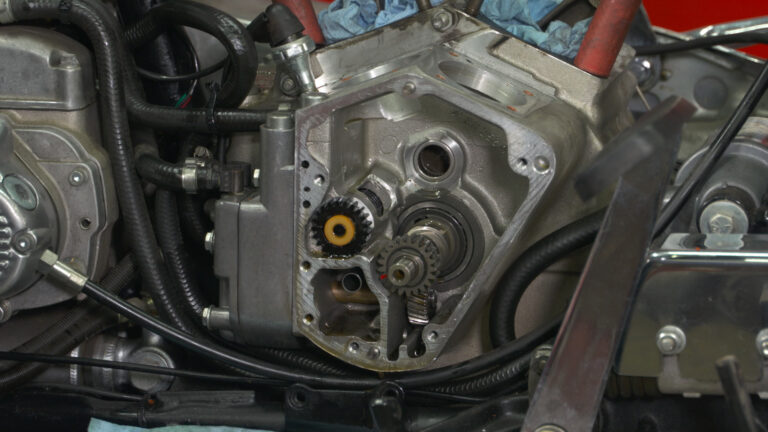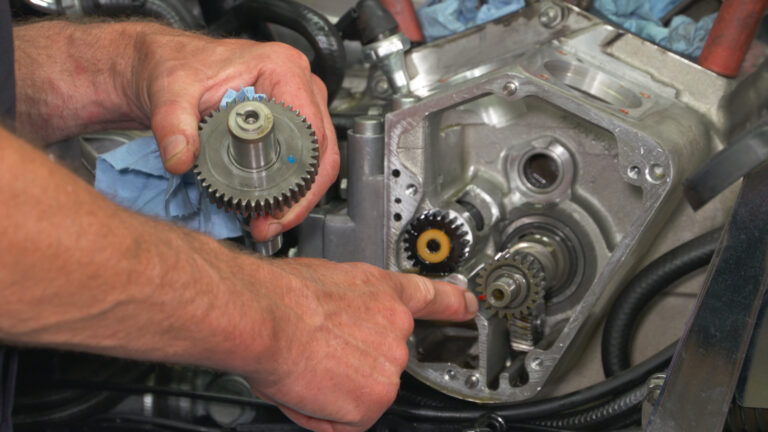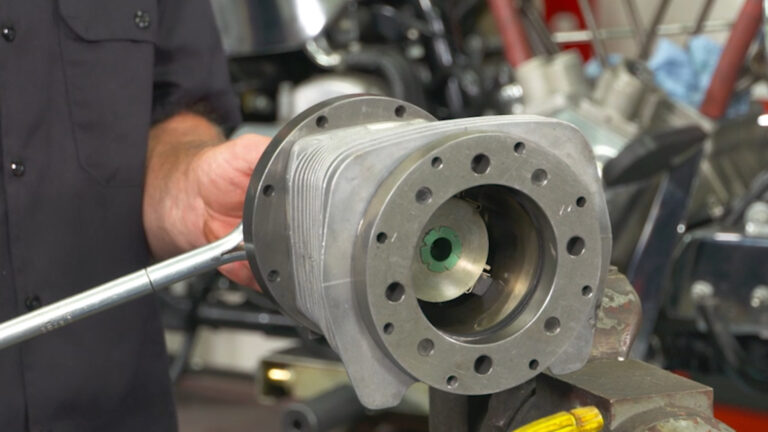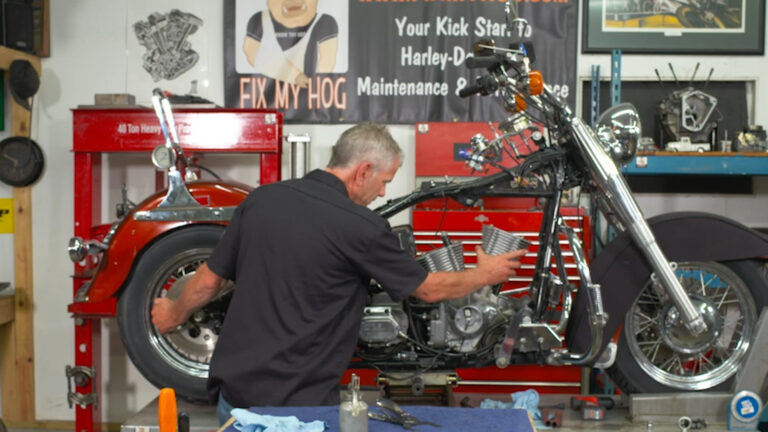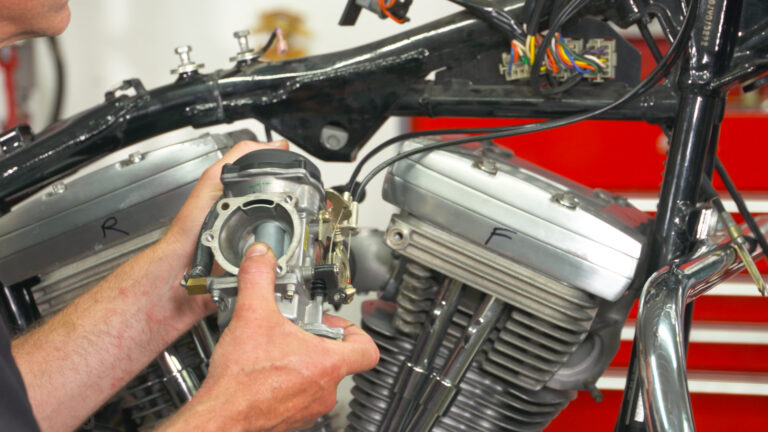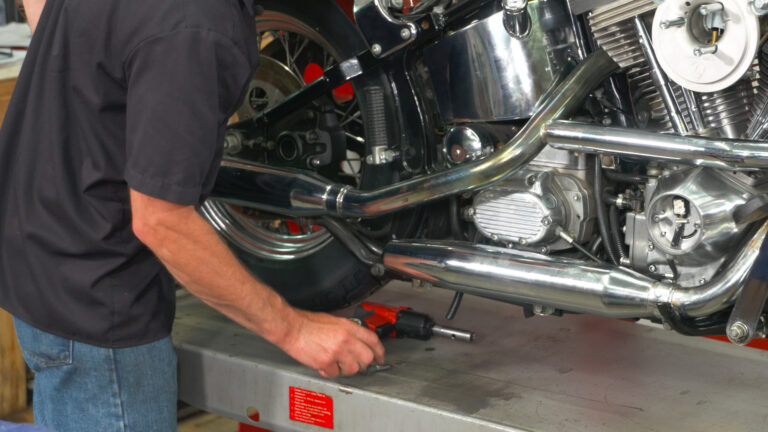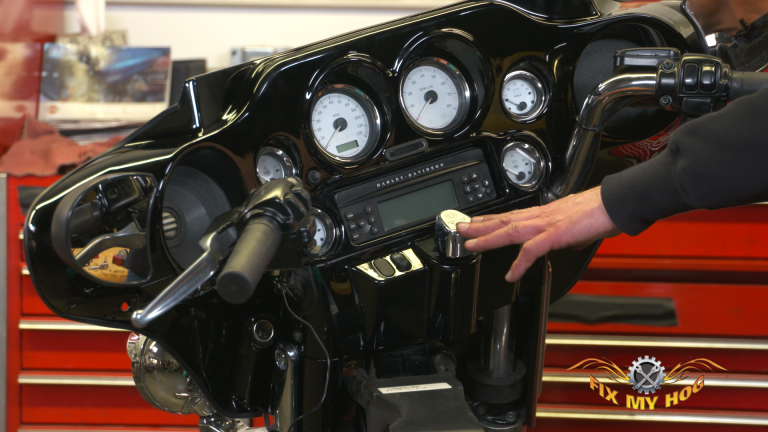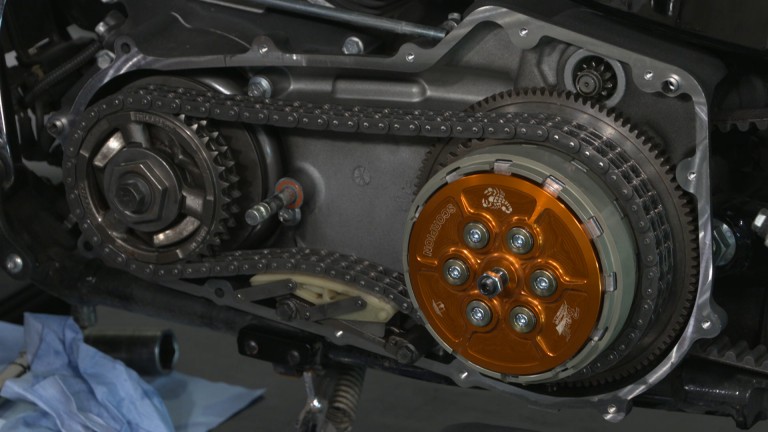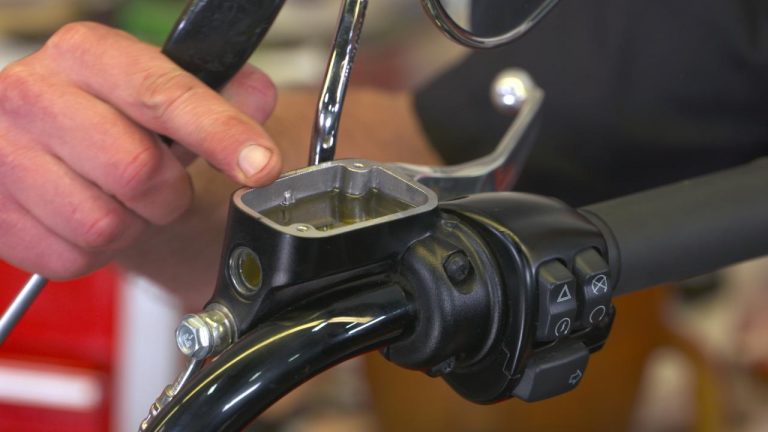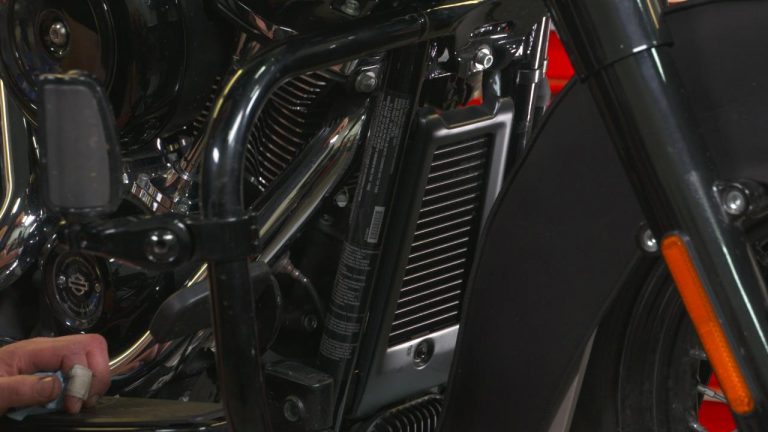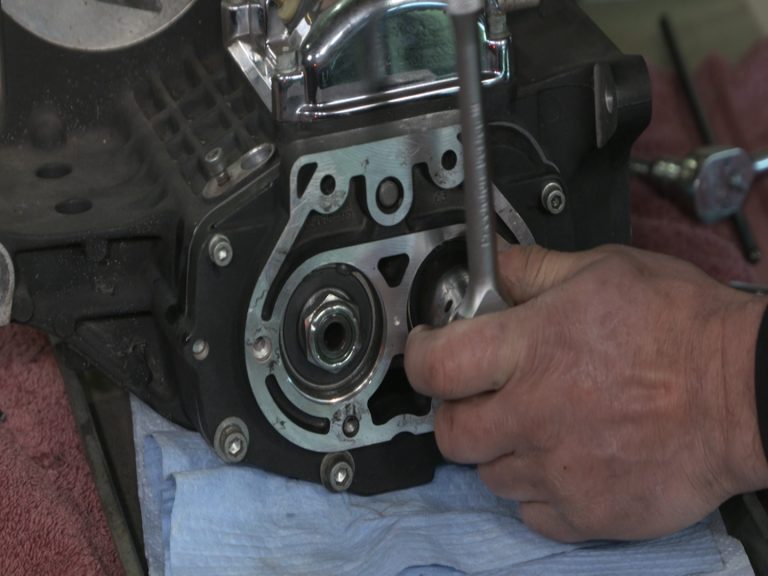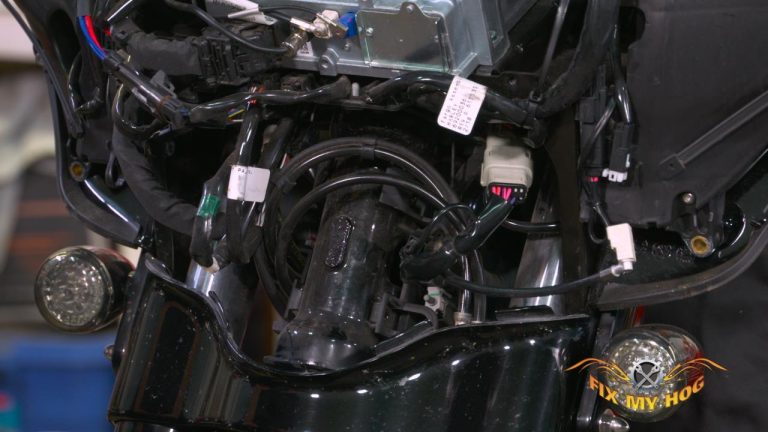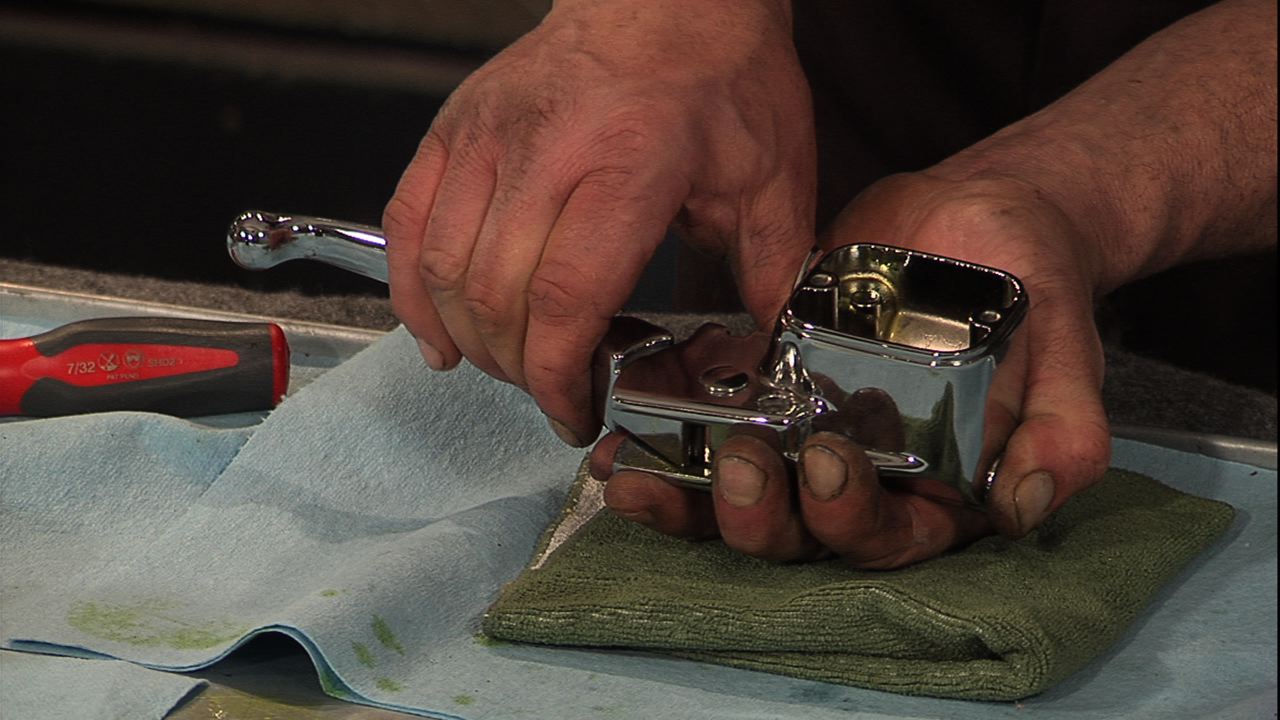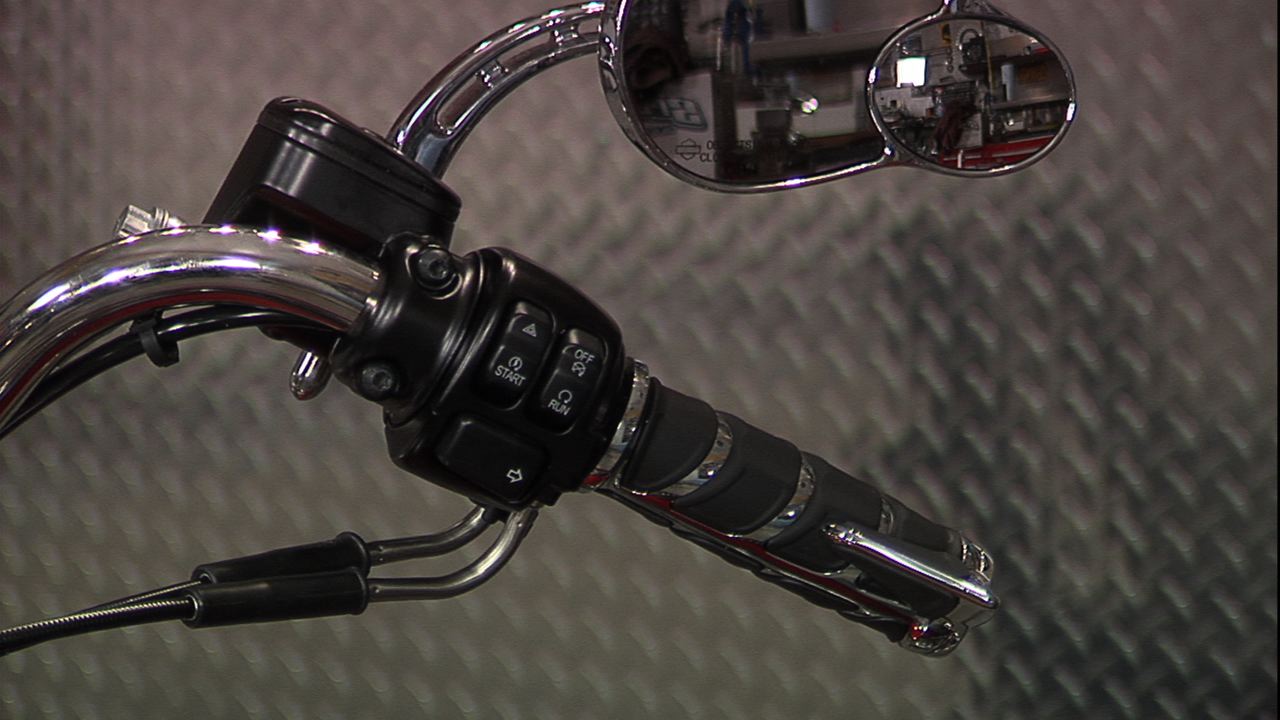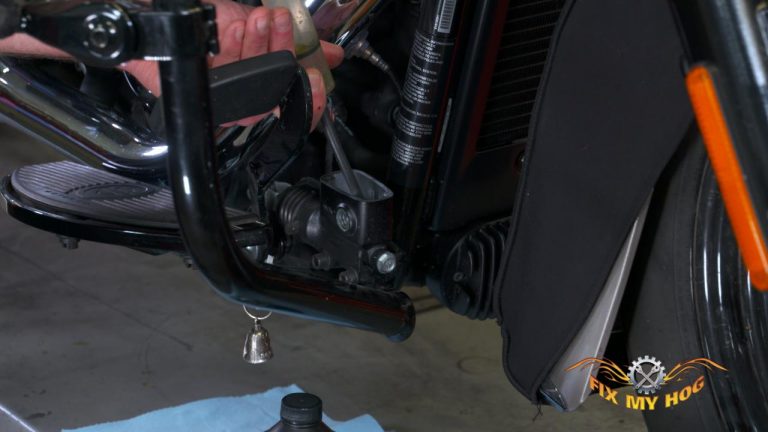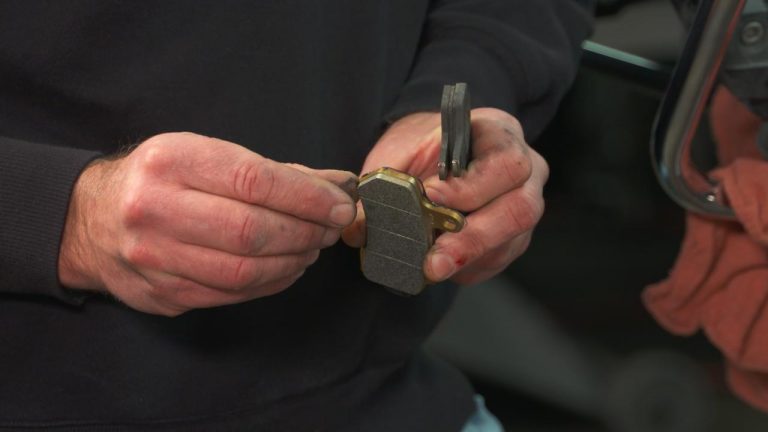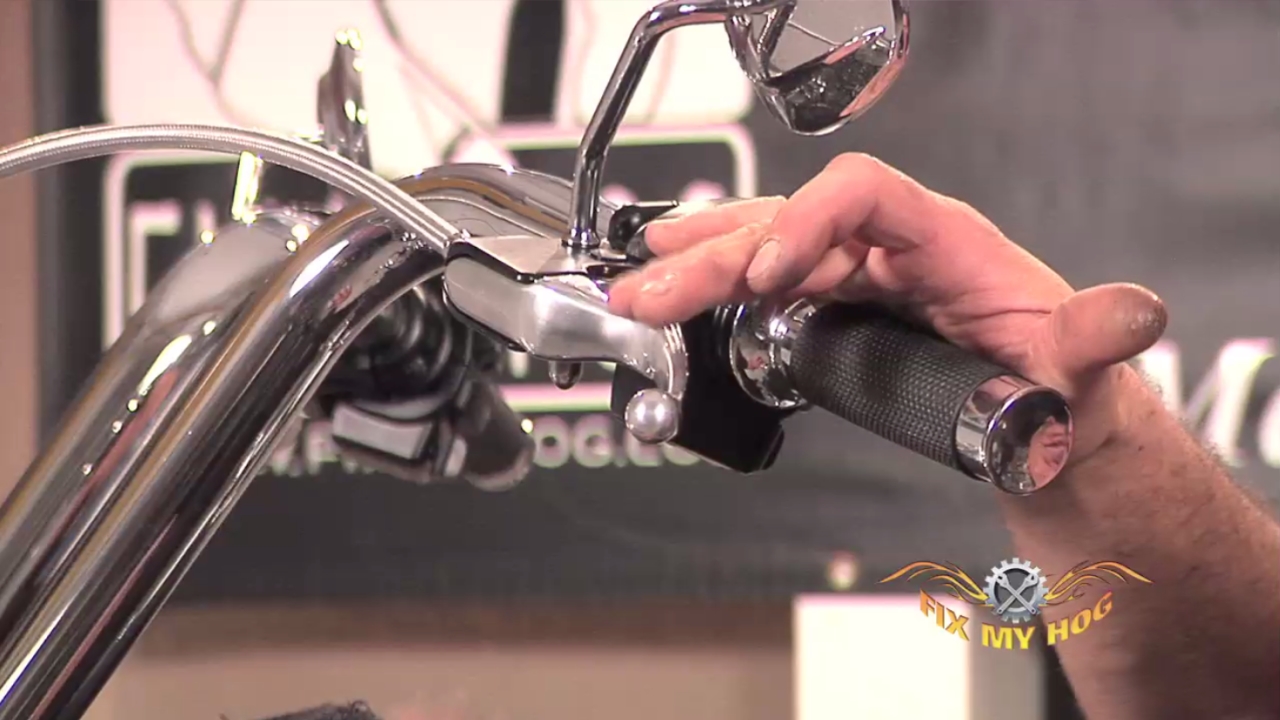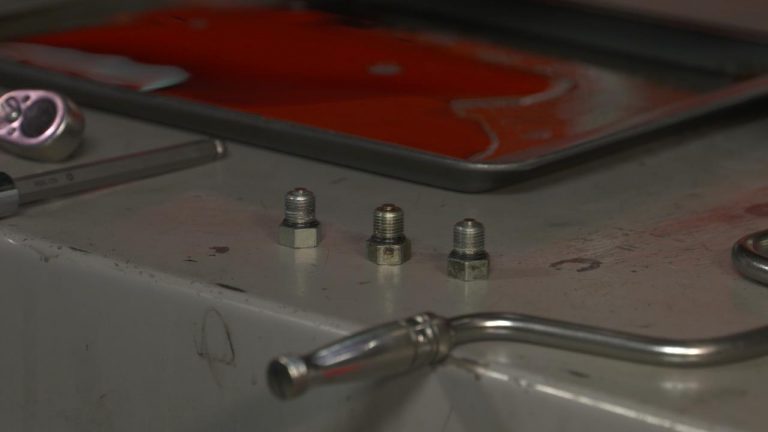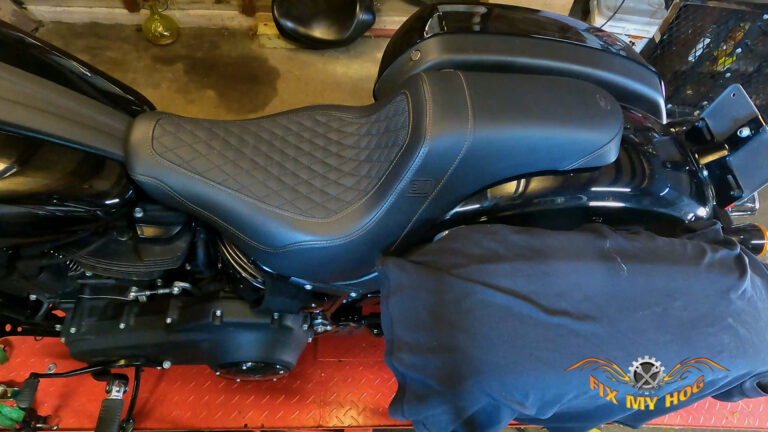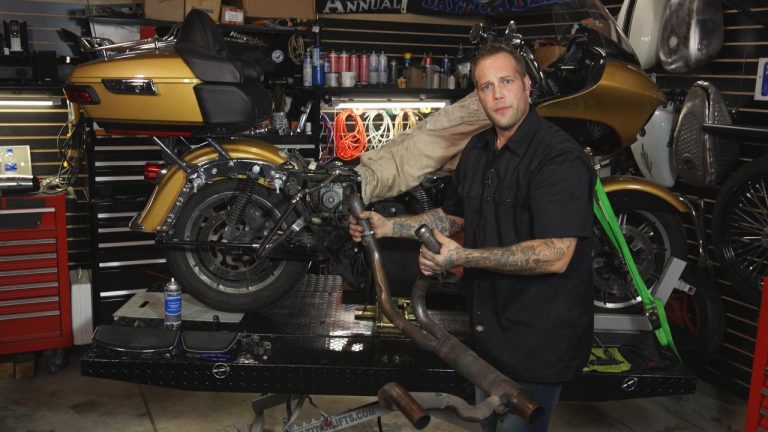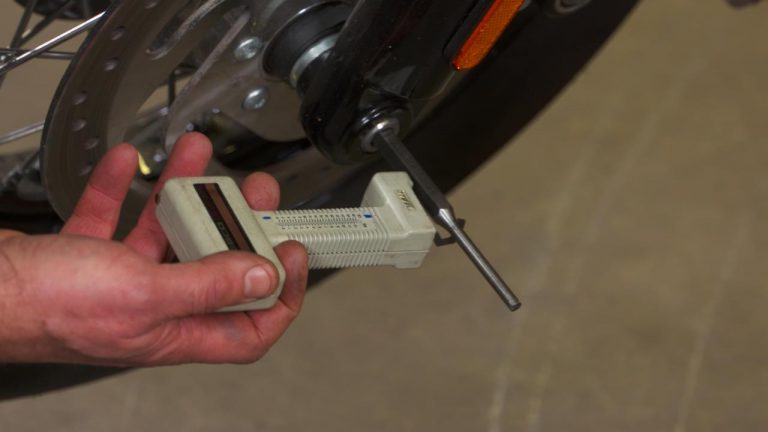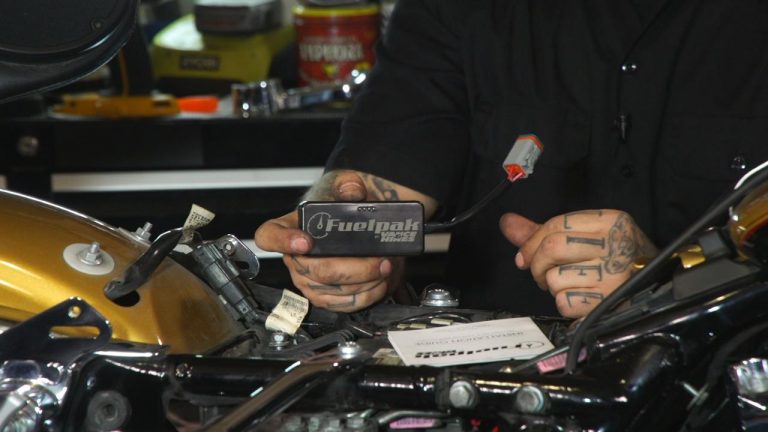
Inspecting Clutch Fluid System for Leaks, Contact or Abrasion
Mike RoenHarley Davidson clutch bleeding and flushing with DOT 4 fluid for the Harley hydraulic clutch system is a procedure that is often overlooked. The fluid eventually breaks down over time and after hours of repeated use. How the system works is relatively simple. When the Harley hydraulic clutch lever is pulled, the master cylinder assembly creates pressure in the clutch line. This pressure activates the secondary clutch actuator or slave cylinder (really, not much different from a hydraulic clutch on any automobile). The secondary clutch actuator piston extends and pushes against a pushrod that will disengage, or separate the clutch pack.
As you work on flushing and bleeding the Harley hydraulic clutch, it is important to inspect all areas of the system. Make sure that you do not see any signs of leaking or seeping at unions like the banjo bolt at the master cylinder. Verify that there are no signs of chafing, cuts, or cracking along the hydraulic line. If the clutch line is properly orientated, it should not be rubbing on any components along its path. The line should also be correctly distanced from the hot exhaust system.
There are a few ways that the DOT 4 Harley hydraulic clutch fluid can be removed and replaced. The process that Mike demonstrates in this video is the most common way most owners can correctly complete at home, on their own, without the need for any expensive specialty tools. If available, a Mighty Vac or Phoenix Injector can also be used to push or pull fluid through the system. An owner can also, remove the master cylinder top cap, insert a small hose over the bleed screw (and route into a container). Crack open the bleed screw and let gravity evacuate the old fluid.
No matter which process is used, it is of utmost importance that air is not introduced into the system. Avoid depressing the clutch lever if the fluid level is low. If a mistake is made and some air does get into the system, it is not the end of the world. The process may simply take slightly longer to complete. Check your work before you move on. Obviously, start by verifying that you have correct clutch lever feel.
You should also take the time to check for correct Harley hydraulic clutch plate movement. Actuate the clutch lever and measure the axial movement of the pushrod/clutch release plate assembly. The minimal axial movement should be 0.078 inch, or 0.198 mm.
Explore videos by Mike Roen
You may be interested in
Premium Membership
Unlock exclusive member content from our industry experts.
- 24/7 Access to Premium Instructional Videos, Projects, and Tips
- Step-by-Step Guides and Demonstrations
- 50% Discount on Video Downloads in the Fix My Hog Shop
- Access to Ask the Expert Program
Unlock exclusive member content from our industry experts.
- 24/7 Access to Premium Instructional Videos, Projects, and Tips
- Step-by-Step Guides and Demonstrations
- 2 Full-Length Video Downloads to Watch Offline
- 50% Discount on Video Downloads in the Fix My Hog Shop
- Access to Ask the Expert Program
Gold Membership
$302 Value
Get everything included in Premium plus exclusive Gold Membership benefits.
- 24/7 Access to Premium Instructional Videos, Projects, and Tips
- Step-by-Step Guides and Demonstrations
- 16 Full-Length Video Downloads to Watch Offline
- Discounts on Purchase-to-Own Content in the Fix My Hog Shop
- Access to Ask the Expert Program
- Exclusive GOLD LIVE Streaming Events
- $8 Off Clymer and Haynes Service Manuals

